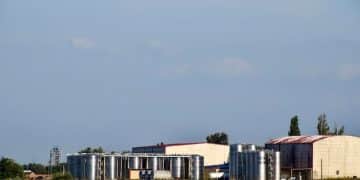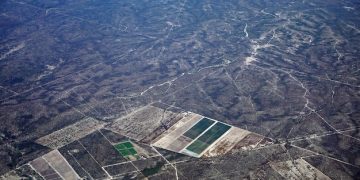Predictive energy demand modeling: why it’s essential now

Predictive energy demand modeling utilizes historical data and algorithms to accurately forecast future energy needs, enhancing efficiency and sustainability for businesses and utilities.
Predictive energy demand modeling plays a pivotal role in how we manage and forecast energy usage. Have you ever wondered how utility companies make their predictions? This article dives into the intricacies of this method, its significance, and how it shapes the future of energy management.
Understanding predictive energy demand modeling
Understanding predictive energy demand modeling is essential for effective energy management. It allows organizations to forecast energy usage patterns and prepare accordingly. By using this approach, companies can better allocate resources and save costs.
What is predictive energy demand modeling?
This modeling helps predict how much energy will be needed at different times. It uses historical data, current trends, and various algorithms to generate accurate forecasts. The predictions can help in planning for peak energy loads that often occur during the hottest or coldest days of the year.
Key features of energy demand modeling
- Utilizes data-driven techniques
- Incorporates weather patterns and seasonal trends
- Aids in reducing energy costs
- Enhances the reliability of energy supply
Another important aspect of predictive modeling is its ability to adapt and learn over time. As new data becomes available, the models can be refined, improving their accuracy. This flexibility is crucial for meeting the ever-changing energy demands of consumers.
Benefits of understanding this model
Knowing how predictive energy demand modeling works can significantly benefit businesses and communities. For instance, it helps prevent energy shortages by identifying when and where demand will be highest. Additionally, it promotes efficient energy usage, which can lead to sustainability efforts being more successful.
Moreover, utilities can optimize their operations when they understand these models. Better forecasting leads to improved energy distribution and can lower the risk of outages. This modeling also supports clean energy initiatives by enabling utilities to incorporate renewable sources effectively.
Ultimately, understanding how predictive energy demand modeling functions helps businesses anticipate needs and adjust strategies. This knowledge motivates continuous improvement in energy management practices.
Benefits of predictive energy demand modeling

The benefits of predictive energy demand modeling are vast and significant for both businesses and society. It allows organizations to efficiently allocate resources, reduce waste, and plan for future energy needs. By leveraging data, companies can make informed decisions that lead to sustainable practices.
Cost Savings
One of the most notable benefits is the potential for cost savings. Predictive modeling can help businesses identify peak usage times, enabling them to optimize energy consumption. This reduction in wasted energy translates to lower utility bills.
- Identifying trends in energy usage
- Reducing energy procurement costs
- Minimizing operational expenses
- Encouraging energy-efficient practices
Moreover, predictive models can improve operational efficiency. By anticipating energy demand, companies can adjust their operations to avoid costly energy spikes. This strategic planning helps maintain financial health.
Improved Infrastructure Management
Better management of energy infrastructure is another critical benefit. When companies utilize predictive energy demand modeling, they can foresee necessary upgrades or expansions in their systems. This proactive approach avoids unplanned outages and enhances reliability.
Additionally, understanding future demand allows utilities to invest wisely in grid improvements and renewable energy sources. By integrating sustainable practices into their energy mix, they promote a cleaner environment.
Furthermore, cities can benefit from this modeling. By predicting energy needs, local governments can implement effective policies to ensure a stable energy supply. This planning supports community growth while maintaining sustainability objectives.
In summary, the benefits of predictive energy demand modeling positively impact various stakeholders. Through cost savings, improved infrastructure, and enhanced sustainability efforts, this approach shapes a brighter energy future.
Real-world applications of energy demand modeling
Real-world applications of energy demand modeling play a crucial role in enhancing efficiency and sustainability across various sectors. By accurately predicting energy needs, organizations can optimize their operations and resources.
Utilities and Grid Management
Utilities benefit immensely from energy demand modeling. This approach helps them forecast electricity demand, allowing for better grid management. They can anticipate peak usage times and ensure that adequate power is available.
- Enhancing load forecasting accuracy
- Preventing outages and disruptions
- Allocating resources more effectively
- Integrating renewable energy sources
Furthermore, predictive models help in planning maintenance schedules, minimizing service interruptions, and improving overall customer satisfaction.
Commercial Buildings
Energy modeling is also extensively used in commercial buildings. Businesses can track their energy consumption and find ways to reduce costs. By analyzing historical energy data, they can implement energy-efficient practices.
For example, a retail store might adjust its lighting and HVAC systems based on predicted foot traffic. This dynamic approach can save money while still providing a comfortable environment for customers.
Moreover, building operators can use simulation models to assess various scenarios. This ability allows them to explore potential energy-efficient upgrades and their impacts before actual implementation.
Smart Cities
In the context of smart cities, energy demand modeling is vital. Urban planners utilize these models to develop sustainable energy strategies. By understanding future energy needs, cities can integrate green technologies and improve energy infrastructure.
Smart grids and connected devices help optimize energy usage in real-time. By using predictive analytics, cities can manage resources more effectively, ensuring a balanced energy supply for all residents.
In conclusion, the applications of energy demand modeling are diverse and impactful. They assist utilities, businesses, and cities in achieving greater efficiency and sustainability.
Challenges in implementing predictive energy demand modeling

Implementing predictive energy demand modeling comes with several challenges that organizations must navigate. Understanding these challenges is crucial for success in energy management.
Data Quality and Availability
One significant challenge is the quality and availability of data. Accurate models rely on high-quality historical data. If the data is incomplete or incorrect, it can lead to unreliable predictions.
- Gathering sufficient historical data
- Ensuring data accuracy
- Addressing gaps in data
- Standardizing formats across sources
Moreover, ongoing data collection is necessary to update and improve the models. Organizations may struggle to maintain real-time data streams, which can hinder their predictive capabilities.
Model Complexity
Another challenge is the complexity of the models themselves. Predictive energy demand modeling often involves sophisticated algorithms and tools. These can be difficult to implement and require skilled personnel to manage.
Organizations may face difficulties in selecting the right model to fit their specific needs. Simplifying complex models while retaining accuracy is a constant balancing act that can test a team’s expertise.
Additionally, businesses may need to invest in training staff to use the modeling tools effectively, which can add to the cost and time involved in implementation.
Integration with Existing Systems
Integrating predictive models with existing systems can also pose a challenge. Many organizations have legacy systems that may not support the latest modeling tools. This lack of compatibility can lead to significant delays.
Moreover, seamless integration is essential for real-time data flows. Without it, the effectiveness of predictive models may be compromised.
Cultural Resistance
Cultural resistance within organizations can impede the adoption of predictive energy demand modeling. Staff may be hesitant to change established practices, creating friction in implementation efforts. Organizations must address these attitudes to foster a culture open to innovation and improvement.
In summary, while there are notable challenges in implementing predictive energy demand modeling, recognizing and addressing these issues can lead to more effective energy management strategies.
predictive energy demand modeling is both essential and challenging. Organizations can enhance efficiency and sustainability by predicting energy usage accurately. Despite challenges like data quality, model complexity, and integration issues, the benefits are substantial. Embracing these models can lead to better resource management and innovative energy practices. Overall, a commitment to overcoming these challenges can drive successful energy solutions.
FAQ – Frequently Asked Questions about Predictive Energy Demand Modeling
What is predictive energy demand modeling?
Predictive energy demand modeling uses historical data and algorithms to forecast future energy needs, helping organizations manage resources efficiently.
What are the main benefits of predictive energy demand modeling?
The main benefits include cost savings, improved operational efficiency, better infrastructure management, and enhanced sustainability efforts.
What challenges are associated with implementing this model?
Challenges include ensuring data quality, managing model complexity, integrating with existing systems, and overcoming cultural resistance within organizations.
How can businesses effectively overcome these challenges?
Businesses can invest in training, ensure robust data collection methods, simplify models, and foster a culture open to change to enhance the implementation process.





